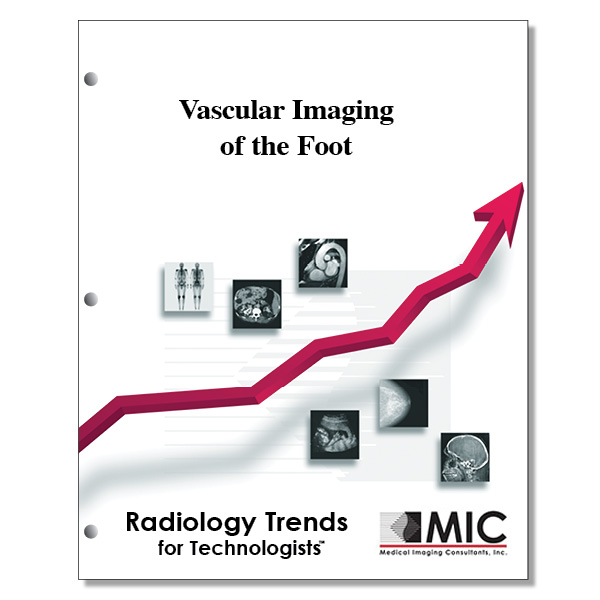

Vascular Imaging of the Foot
A review of revascularization of the foot using percutaneous transluminal angioplasty.
Course ID: Q00333 Category: Radiology Trends for Technologists Modalities: Radiography, Vascular Interventional2.5 |
Satisfaction Guarantee |
$29.00
- Targeted CE
- Outline
- Objectives
Targeted CE per ARRT’s Discipline, Category, and Subcategory classification:
[Note: Discipline-specific Targeted CE credits may be less than the total Category A credits approved for this course.]
Registered Radiologist Assistant: 2.50
Procedures: 2.50
Neurological, Vascular, and Lymphatic Sections: 2.50
Vascular-Interventional Radiography: 2.50
Procedures: 2.50
Vascular Diagnostic Procedures: 2.50
Vascular Sonography: 1.00
Procedures: 1.00
Extracranial Cerebral Vasculature and Other Sonographic Procedures: 1.00
Outline
- Introduction
- Patient Preparation and Interventional Procedure
- Imaging Technique
- Pedal Arterial Anatomy and Angiosomes
- Anterior Circulation and Angiosomes
- Posterior Circulation and Angiosomes
- Peroneal Artery Angiosomes
- Pedal-Plantar Anastomosis
- Anatomic Variants of the Pedal Arteries
- Conclusions
Objectives
Upon completion of this course, students will:
- learn an alternative to inframalleolar bypass for limb salvage
- be familiar with the terms recanalization and revascularization
- recognize the specialty physicians who perform below-the-knee endovascular procedures
- know the most common cause of critical limb ischemia
- identify the most important risk factor for critical limb ischemia
- learn techniques that have improved results of percutaneous transluminal angioplasty
- recognize the condition described as calf pain only while walking
- learn an alternative to an antegrade approach during angiography
- understand source arteries and what they are called
- know the number of angiosomes in the foot
- identify relative contraindications to angiography
- understand proper patient preparation for a digital subtraction angiogram (DSA)
- recognize the technique recommended for complex infrapopliteal revascualrization
- understand radiation safety measures
- know how to minimize motion artifacts during an angiographic procedure
- know the key objective when performing a revascularization procedure in the foot
- realize key characteristics of a DSA unit
- recognize risks to watch for following an angiography procedure
- learn the projection that best depicts the common plantar artery bifurcation
- know the technique to best record collateral or retrograde circulation
- be able to describe post-processing techniques used with DSA
- know the projection to best visualize the pedal-plantar loop
- understand the post-processing technique that allows selection of background anatomy
- be able to describe the basic vascular anatomy of the foot and it branches
- identify the circulatory pathways of the foot
- know the vessel supplying blood to the dorsal part of the foot
- recognize the arteries of the posterior circulation of the foot
- know another name for the distal posterior tibial artery
- identify the bony landmark where the peroneeal artery bifurcates
- be able to explain the type of cross over technique when performing complex infrapopliteal revascularization procedures
- know the vessels of the pedal-planter loop
- understand anatomical variants pertaining to blood supply feeding the first toe
- identify a vessel with a more constant course than the dorsalis pedis artery
- learn the percentage of patients with a complete pedal-plantar loop anastomosis
- understand advances in imaging and catheter technology that have made vascular recanalization of the foot a feasible interventional option
